“The early bird catches the worm,” they say. In higher education administration, the early bird catches a hundred emails, two urgent meeting requests, and a desperate plea from a professor who needs a last-minute resource for their lecture. Welcome to my world.
It’s 7:00 AM, and I’m already two cups of coffee deep, facing the never-ending tasks that define higher education administration. On the docket today: oversee the rollout of a new enrollment policy, respond to at least a dozen student inquiries, coordinate with the campus facilities team about the HVAC issue in the science building, and somehow find time to prepare for the budget review meeting scheduled for 4:00 PM. Oh, and there’s the ongoing university-wide initiative on enhancing digital literacy. Just another ordinary day in the life of higher ed.
But here’s the question: How can we manage all of this without burning out? The real challenge is keeping the daily operational chaos under control while staying focused on the bigger goal: providing an exceptional experience for students, faculty, and staff. That’s where solutions designed for higher education administration make all the difference.
Taming Task Overload with Structured Workflows
One of the most common pain points I face is the sheer volume of tasks, projects, and requests flying my way. From managing campus events to responding to student service requests, the workload can feel unmanageable without a structured system. The solution is simple: centralizing task management and creating transparent workflows that make it easier to stay on top of every project.
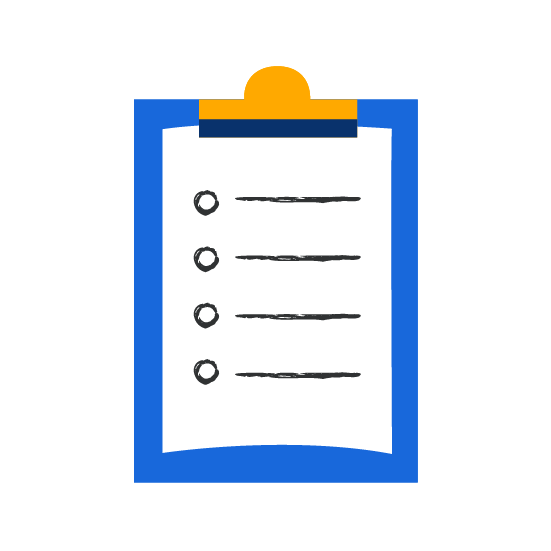
Today, I’ve set up a project for the new enrollment policy. Tasks are assigned to various departments: administration, student affairs, and IT. In the comments section of one task, I see a suggestion from a department head about potential concerns from faculty members. I quickly tag the dean of the faculty and leave a note: “Let’s discuss this in the 10:00 AM meeting.” With Atlassian’s Jira, I can coordinate with everyone efficiently, ensuring that all communications and updates are within the platform. This level of transparency helps everyone stay informed, preventing issues from falling through the cracks.
Jira’s project management features allow me to manage complex workflows, track dependencies, and ensure that everything is aligned across departments. It’s more than just task management – -it’s a vital tool for higher ed, enabling real-time coordination of the intricate web of administrative tasks.
Managing the Flood of Campus IT Requests
In higher education, the volume of IT requests from students, faculty, and staff can be overwhelming. From system access issues to facility-related technical problems, the demand for quick and efficient IT support is ever-growing. Without a centralized system, it becomes challenging to ensure that all these requests are tracked, prioritized, and resolved in a timely manner.
Next, I switch to Jira Service Management, where all incoming IT requests from students, faculty, and staff are tracked. In a higher education technology landscape where IT services are increasingly critical, having a centralized ITSM system like Jira Service Management allows for quick and efficient resolution of issues.
A ticket from Dr. Thompson, the chemistry professor, indicates that there’s an HVAC issue in the lab. I route this to the facilities management team and assign it a high-priority status. Another ticket involves a student unable to access the online learning platform. With Jira Service Management, I can immediately assign these issues to the appropriate team for resolution. The ability to monitor and track these requests in real-time ensures that nothing falls through the cracks.
Universities often face a never-ending flow of IT service requests, and having a robust system like Jira Service Management is essential for maintaining smooth operations. Whether it’s resolving campus-wide tech issues or individual faculty needs, this ITSM tool ensures everything is logged, tracked, and resolved efficiently.
Breaking Down Silos with Centralized Knowledge Management
In higher education, managing information across various departments can become disjointed, with each team relying on separate systems for storing and accessing important documents. This fragmentation leads to inefficiencies and confusion when it comes to collaboration and decision-making. The need for a unified platform that supports knowledge sharing and cross-departmental collaboration is critical.
Once I’ve handled the immediate fires, I move over to Confluence, Atlassian’s collaboration platform. Confluence acts as a digital encyclopedia, where we store all our policies, procedures, and administrative documents. For a higher education institution, having a unified platform for knowledge management is invaluable. Confluence supports collaboration across departments and ensures that everyone is on the same page.

Preparing for the afternoon budget meeting, I pull up last year’s budget reports stored in Confluence. I make some quick notes and tag the finance director for their input. Later, I access the page dedicated to our university’s digital literacy initiative, which is a critical part of our ongoing education technology strategy. Here, we have all the necessary documents, timelines, and feedback from faculty neatly organized. Everything I need for tomorrow’s meeting with the IT and academic leadership is at my fingertips.
Confluence enhances productivity by enabling cross-functional teams—be it administrative, academic, or IT—to collaborate seamlessly. For universities looking to scale their digital operations, knowledge management through Confluence is key.
Atlassian to the Rescue: Tackling Higher Ed Chaos One Tool at a Time
The tools I mentioned above—Jira, Jira Service Management, and Confluence—aren’t just general business solutions; I’ve found them to be perfectly suited to the unique challenges we face in higher education. Atlassian provides scalable solutions that adapt to the demands of universities like mine, from managing academic workflows to improving campus facilities management and streamlining student services.
In higher ed technology, the stakes are high, and trust me, the needs are more complex than people might think. Juggling enrollment management, improving IT support for both students and faculty, and coordinating large campus-wide initiatives can be overwhelming without the right tools. That’s why I rely on Atlassian’s suite to keep everything in check. It ensures that all tasks, communications, and resources stay aligned, no matter how chaotic things might seem. Having these tools on hand makes a world of difference in my day-to-day work, and I can confidently say my colleagues feel the same way. Whether it’s a quick request or a major project, we’ve got the systems in place to manage it all, and that gives me a sense of control over the chaos.
For example, learning management systems (LMS) are essential for modern universities. Integrating Atlassian tools with existing LMS platforms enhances the management of online courses, streamlines academic resource sharing, and simplifies the process of handling IT and administrative requests. By connecting Confluence to an LMS, universities can create an integrated environment where both faculty and students can easily access course materials, policies, and updates.
Making Student Services Run Smoothly
In a university setting, one of the most critical aspects of education management is making sure student services run like a well-oiled machine. Whether it’s managing enrollment, handling student requests, or keeping communication between departments smooth, I’ve seen firsthand how Atlassian’s tools transform the way we get things done. It’s no small task, but with these tools, it feels manageable.
Take enrollment management, for example. Every semester, I’m tasked with ensuring hundreds, sometimes thousands, of students are enrolled in the right courses, their records are updated, and they get the support they need. Without the right system in place, this process would drive me up the wall. But with Jira Service Management, handling all these requests becomes second nature. I can log tickets for every enrollment issue, manage course changes, and automatically keep students in the loop with notifications. The best part? I don’t have to waste time manually sending updates or getting lost in email threads. It’s a huge relief for me and my colleagues, as we can focus on helping students rather than getting buried in administrative tasks.
And it doesn’t stop at enrollment. Universities are complex beasts with countless services to manage. Atlassian tools help us streamline other key areas like financial aid management, counseling, and academic advising. I’ve used Confluence to build a shared knowledge base that anyone on the student services team can access. This way, students can find answers to their questions without having to wait on me or anyone else to reply to their emails. Instead of me spending hours fielding the same questions over and over again, students can jump into Confluence and find everything they need. Honestly, it’s a game-changer for everyone involved and makes me feel like I’m really helping students in a more efficient way.

Then there’s the challenge of managing campus events. I’ve been part of organizing major events like orientation week, and let me tell you, without the right tools, it’s an absolute nightmare. Coordinating across multiple teams—administration, student services, IT, facilities, and even security—can feel like herding cats. But with Jira’s project management capabilities, I’m able to keep track of every task, assign responsibilities, and set deadlines. When I know every department is clear on what they need to do, I can finally relax a little. From ensuring the auditorium is ready for the keynote speaker to making sure security is in place for the event, Jira keeps everything on track. Project management in higher education can be overwhelming, but with Jira, it’s like having a personal assistant who makes sure nothing gets missed.
At the end of the day, Atlassian’s suite of tools does more than just make my job easier. It makes our entire process more transparent. I love that I can track everything in real-time, and my colleagues can, too. It saves us all time, reduces stress, and keeps us focused on what really matters—helping students succeed. When student services are efficient and transparent, it makes life easier for everyone, from administrators to students. Instead of chasing down loose ends, I’m able to focus on supporting students and making their experience better.
How Atlassian is Shaking Things Up in Higher Ed’s Digital Transformation
As I’ve seen firsthand, higher education is fully diving into digital education technology, and tools like Jira and Confluence are helping institutions, including mine, keep up with the growing demand for online learning, cloud-based management, and remote collaboration. Project management in higher education is evolving quickly, and I can confidently say that Atlassian is right there in the driver’s seat, helping universities like ours navigate this transformation. It’s like having a GPS for campus-wide chaos!
With more universities, including mine, transitioning to cloud-based learning platforms and digital-first approaches, Atlassian tools have become essential for managing the shift. These tools have streamlined our administrative workflows, helped us manage complex projects across departments, and improved communication. Personally, I’ve found that by using Atlassian, I can focus on ensuring students succeed and that academic excellence stays on track. It’s made my job way easier (and a lot less stressful), and I know my colleagues feel the same way as we continue to adapt to this digital transformation.
Wrapping Up—But Never Really Done
By 5:00 PM, I’m ready to call it a day—or at least pretend I’m done. The new enrollment policy is on track, the IT issues are being resolved, and the budget meeting went smoothly thanks to Confluence. Tomorrow’s another day of managing the complex, fast-paced world of higher education, but with Atlassian’s suite of tools at my side, I know I can handle whatever comes my way.
For universities, the challenge of managing diverse departments, large student populations, and ever-growing administrative tasks is daunting. But with Atlassian’s technology solutions for higher education, managing this chaos becomes much more manageable, enabling administrators to focus on their real goal—delivering high-quality education.
Schedule a demonstration with one of our Atlassian experts today to learn more about Atlassian’s technology solutions for higher education.


 Change and increased needs seem to be the only constants in today’s world. Workloads are ever increasing and requirements from new and unexpected sources are creating backlogs that are becoming critical. This can put an incredible burden on plans, resources and personnel. The next step is looking at how technology and innovation can improve these new processes and address new demands through live chats, Artificial Intelligence (AI) modeling, etc. There is immense opportunity for Local agencies in Colorado to use this technology to make workflows more efficient, learn about their citizens and offer that instant gratification that customers have come to expect.
Change and increased needs seem to be the only constants in today’s world. Workloads are ever increasing and requirements from new and unexpected sources are creating backlogs that are becoming critical. This can put an incredible burden on plans, resources and personnel. The next step is looking at how technology and innovation can improve these new processes and address new demands through live chats, Artificial Intelligence (AI) modeling, etc. There is immense opportunity for Local agencies in Colorado to use this technology to make workflows more efficient, learn about their citizens and offer that instant gratification that customers have come to expect.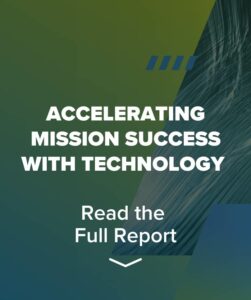
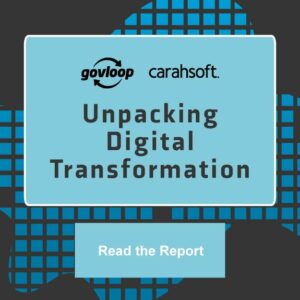 How Agencies Are Driving Innovation to the Edge
How Agencies Are Driving Innovation to the Edge  Integrating and Examining Data to Enhance Student Engagement
Integrating and Examining Data to Enhance Student Engagement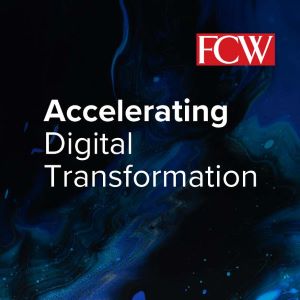 “There are many factors that might prompt agencies to consider moving to another cloud environment, including cost, application performance, security and data protection requirements. In most public clouds, applications with frequent data uploads or downloads will typically incur higher-than-normal hosting costs due to ingress and egress charges. Ideally, agencies should have a consumption model that aligns with their data access needs. Similarly, depending on the volume of data and the location of users and adjacent applications, latency may be introduced into application processing, which will present itself to users as poor performance.”
“There are many factors that might prompt agencies to consider moving to another cloud environment, including cost, application performance, security and data protection requirements. In most public clouds, applications with frequent data uploads or downloads will typically incur higher-than-normal hosting costs due to ingress and egress charges. Ideally, agencies should have a consumption model that aligns with their data access needs. Similarly, depending on the volume of data and the location of users and adjacent applications, latency may be introduced into application processing, which will present itself to users as poor performance.” Are People at the Center of Your Modernization Efforts?
Are People at the Center of Your Modernization Efforts? One place to improve on these experiences is an agency’s forms. While the website is often the first point of interaction on a customer’s journey, forms are the point at which the communication becomes a conversation. An
One place to improve on these experiences is an agency’s forms. While the website is often the first point of interaction on a customer’s journey, forms are the point at which the communication becomes a conversation. An 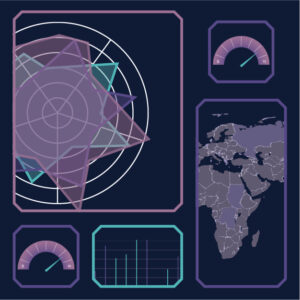 How Automated Analytics Can Fuel Digital Transformation
How Automated Analytics Can Fuel Digital Transformation